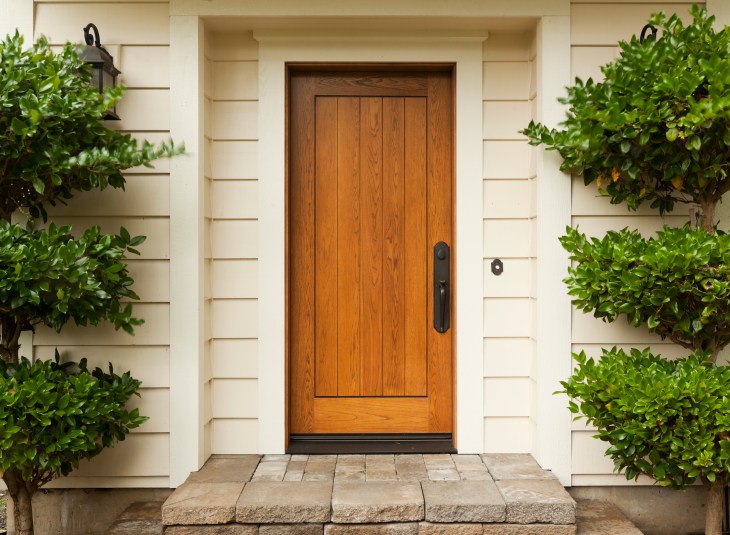Expert Renovation Tips for Every Room in the House

The path to a successful home renovation is smoother when you’re armed with helpful information. Whether you’re making home improvements for yourself or looking to flip a property and make a quick profit, it’s vital to consult with the experts first.
We asked architect Scott Weston of Scott Weston Architecture Design, professional renovator Lana Taylor of Three Birds Renovations, and John McManus, the principal of LJ Hooker, NSW, to spill their top tips for transforming all areas of the home.
Flow, Function, and Light
“Light forms the foundation for how a space feels. If you miss the mark here, no amount of rugs or cushions will right it,” says Taylor. That’s why north-facing homes with views are so sought after, offers McManus. “People want something nice to look at from their window, such as water or a pretty garden.”
If the orientation of your home is less than ideal, or the view is of a freeway, a light-filled, visually appealing aspect can still be achieved with design and landscaping, says Weston. It might come down to rearranging rooms, or moving or adding windows to improve the functional planning and flow, but it will be worth it to get that link to an external landscape.
“In addition, get to know the seasons and the sunlight coming into the existing home, and work out how to capture natural cross-breezes.” For Taylor, there’s no such thing as too many windows or doors: “Chat with a structural engineer to find out what’s possible, before you submit any plans.”
Plan for the future.
If you’re renovating a home that you intend to live in for a long time, creating a floor plan that will still work 15 years from now is a must, says Taylor.
“Families grow up. In the early years you’ll probably want a kids’ playroom under your nose — near the kitchen, perhaps. But once your children are teenagers, you — and they — will prefer somewhere to escape to.” Plan for multifunctional spaces that can adapt.
Start with a welcoming entrance.
Mark the way to your front door with some well-placed stepping stones or another form of path. And don’t assume you need to spend a fortune on rendering ugly old brick to transform a property’s exterior, says Taylor.
“Spraying the brick with a premium exterior paint is much cheaper than render and can be completed in a couple of days. Plus, it looks great.” Inside, create a handy place for daily essentials or borrow an idea from country homes and include a mud room near your entry or internal garage access, suggests Taylor, with space for schoolbags, shoes, hats and sports equipment.
According to McManus, buyers love an entryway that isn’t too narrow and, ideally, has an alarm system.
Create a relaxing living room.
For this reason, make sure your living space will suit you and your family and their interests. Love a good movie or Netflix binge session? Weston suggests installing built-in ceiling speakers for great surround sound, minus the eyesore clutter.
Open-plan living spaces are still the ideal set-up, and a living room that spills out onto an entertaining deck is always going to be worth the money it cost to build. “One trick to making the outside feel like a continuation of inside is to use the same ceiling lining,” says Taylor. This could be a panelled ceiling with exposed rafters, or a flat plaster ceiling with downlights.
Prioritize functionality in the kitchen.
If you decide to sell your renovated home in the future, an updated, spacious, and functional kitchen layout will ensure the best return, says McManus. Ensure that you have plenty of cabinet storage and countertop space. “Prospective buyers will remember if your home has enough kitchen counter space or not,” he says.
Weston suggests skipping hinged doors and corner cabinets, and opting instead for pull-out extension drawers, which are easier to access and clean. Internal joinery in Laminex Lamiwood will last longer than melamine finishes, he points out.
While integrating kitchen appliances is popular, replacing them can be costly, and it may be hard to replace them with new ones of the same size down the track. Instead, consider installing a small under-counter fridge and a full-size one in a nearby scullery.
If that’s not an option, ensure the cabinetry is deep enough for the fridge to sit flush with the cabinetry on either side, suggests Taylor. Choose a model before you renovate so you can factor in the exact dimensions.
Above all, make realistic choices that will work for you and your family, she adds. “Don’t sacrifice what you would prefer to live with every day for the sake of what looks nice when visitors stop by once a month.”
Make a multifunctional dining room.
Like the kitchen, the dining room is often a multifunctional space, so make it cater to all its jobs with a few bonus inclusions: dimmer lights for mood lighting while eating, a bench seat by the window for entertaining, and storage in the bench seat or nearby sideboard for art and office supplies.
For those in small homes that don’t have the luxury of a separate dining room, the kitchen island often becomes the dedicated gathering place, so “allow for powerpoints and USB ports in the island bench to cater for these flexible requirements,” says Weston.
Style the bedrooms.
Four bedrooms with an ensuite off the main bedroom is the magic formula for real-estate sales, says McManus. “The ensuite vanity should be able to accommodate toiletries and have a big enough mirror to fit two people getting ready at the same time,” he says.
For comfort, luxe fittings, and temperature control are paramount. Weston recommends a soft or mid-grey carpet for any style home, while Taylor says combining wall sconces by the bed with a practical and attractive ceiling fan can make a space feel more relaxed and control the temperature.
Add bathroom updates that increase value.
A well-renovated bathroom is a big selling point and incredibly satisfying when it functions properly. “It might be cheaper to keep things where they are, but if you’re going to bother with the mess, dust and money of a bathroom reno, make it count by getting the layout right,” advises Taylor.
That means making the space as practical as possible, preferably with a separate bath and plenty of storage, all things high on a buyer’s wishlist, says McManus. Building low-stud walls can make it less of a hassle to relocate the plumbing services, while giving you the bonus of having a storage/display shelf on top. Large tiles with minimal grout lines, and wall-hung toilets and vanities will all make cleaning easier, says Weston.
Taylor says having a skylight in the bathroom is a must. “It floods the room with natural light and doesn’t take up any space on your floor plan. Above a bath or shower, it also creates a resort vibe.”
The Dos and Don’ts of Renovating
Do:
- Your research before you purchase a property: check whether it’s heritage-listed, in a flood zone, or has any other restrictions.
- Understand the architectural style of the home and let that guide you to come up with an overall style and aesthetic, rather than forcing an unsuitable look onto the property.
- Speak to your window and door supplier about the different kinds of glass available to make your home more comfortable. “There’s glass to reduce heat loss in winter, UV glare in summer, and noise all year round,” says Taylor.
- Have your rangehood ducted externally rather than recirculating the exhaust, to ensure cooking smells are always confined to the kitchen.
Don’t:
- Contrast guttering or downpipes against exterior walls. “They’re not a feature, so don’t make them stand out,” says Taylor. Paint them the same color (or very similar to) the exterior walls.
- Use tiles from different batches as they can have noticeable variations in color. Ensure boxes or individual tiles have the same batch number.
- Buy a plant just because it’s pretty. Do your research and make sure it will be in a suitable environment, inside or out, with the right amount of sun.
- Choose a dark floor covering if you want your home to look and feel bigger than it is. A lighter floor will trick the eye and make the house appear more spacious.
This article was originally written by Belinda Graham. For more, check out our sister site, Homes to Love.
More From FIRST
How a ‘Decluttering November’ Can Transform Your Whole House Before the Holidays
7 Low-Commitment Ways to Add a Pop of Color to Your Home
18 Little-Known Ways Witch Hazel Can Improve Your Whole Life













